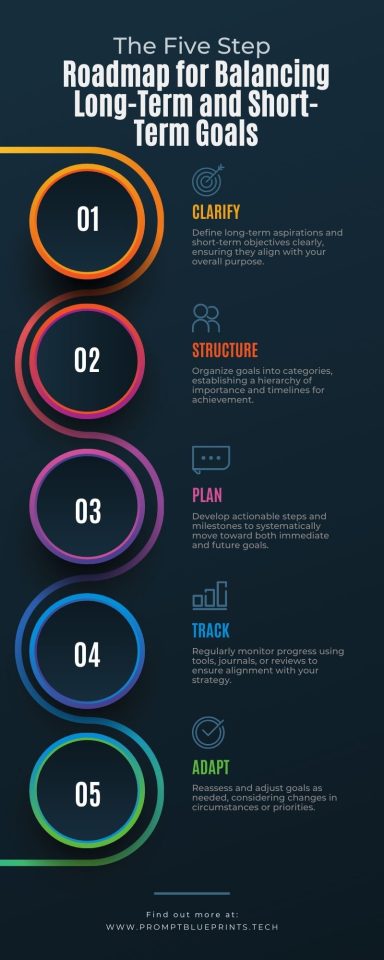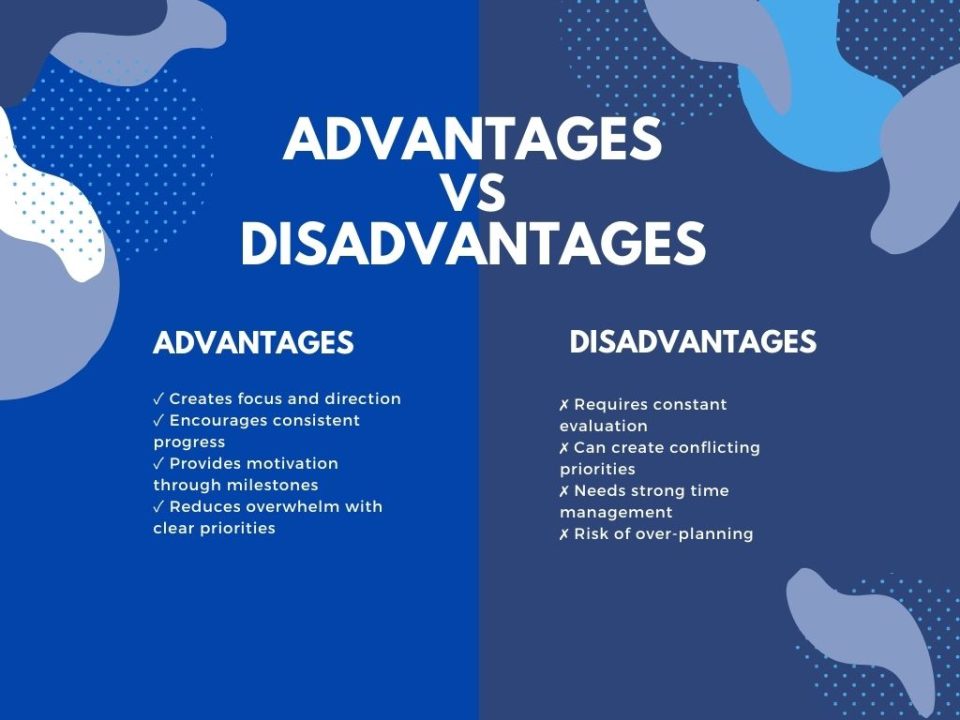Long-Term vs Short-Term Goals

Setting goals is the cornerstone of personal and professional success. Yet, many struggle with balancing long-term aspirations and short-term objectives. Striking the right balance can ensure steady progress without losing sight of your ultimate vision.
Studies show that 92% of people never achieve their goals—often due to unclear timelines or lack of strategic planning. This highlights the importance of understanding how short-term and long-term goals can complement each other.
In this guide, we’ll explore actionable strategies to create a balance between long-term and short-term goals as well as smart goals, helping you build a sustainable path to achieving your dreams. Whether you’re managing team goals at work or pursuing personal goals, this balanced approach will enhance your goal-setting process and maximize your chances of success.

Timeline Planning
Achieving meaningful goals begins with understanding how to structure your time effectively.
Steps to Effective Timeline Planning:
- Break Down Goals by Timeframe:
- Short-term goals: 1-12 months.
- Mid-term goals: 1-5 years.
- Long-term goals: Over 5 years.
- Align Goals to Priorities: Rank each goal’s importance to ensure it matches your immediate and future needs.
- Create Actionable Milestones: For instance, if your long-term goal is launching a business, set short-term goals such as creating a business plan or attending networking events.
- Use a Timeline Tool: Tools like Gantt charts or calendars can visually organize your tasks.
Common Mistakes to Avoid:
- Failing to adjust timelines for unexpected challenges.
- Overloading short-term goals with too many tasks.
Goal Hierarchy
A clear hierarchy ensures your goal achievement efforts are streamlined and effective.
Steps to Building a Goal Hierarchy:
- Identify Core Long-Term Goals: Define what success looks like for you in the next 5-10 years.
- Break Long-Term Goals into Short-Term Objectives: Example: If becoming fluent in French is the long-term goal, a short-term goal could be completing one online course within six months.
- Categorize Goals by Importance: Separate goals into “must-haves” and “nice-to-haves.”
Expert Tip:
- Regularly revisit your hierarchy to adjust for changes in your personal goals or professional life.

Progress Tracking
Tracking your progress is essential for maintaining consistent progress and ensuring you are on the right track.
Strategies for Progress Tracking:
- Daily Journaling: Write down small wins and areas for improvement.
- Set Weekly Checkpoints: Dedicate time weekly to assess your progress toward SMART goals.
- Leverage Technology: Apps like Trello or Asana can keep you organized.
Avoid These Mistakes:
- Ignoring minor setbacks.
- Failing to celebrate achievements, even small ones.
LEARN ABOUT PROMPTING
10 Actionable Prompts for Goal Setting:
- “Help me set SMART goals for [specific purpose].”
- “What are short-term milestones for achieving [long-term goal]?”
- “How can I prioritize personal and professional goals?”
- “Create a goal hierarchy for [specific objective].”
- “Suggest ways to measure progress toward [goal].”
- “List daily habits that align with achieving [goal].”
- “How do I manage conflicting goals effectively?”
- “Suggest a timeline to achieve [specific goal].”
- “What are actionable steps to start [goal-related task]?”
- “How can I adjust my goals to remain realistic yet challenging?”
Understanding Good vs. Bad Prompts:
Good Prompts:
- Are specific (e.g., “What’s the best way to balance these three goals?”).
- Focus on actionable advice.
- Provide context (e.g., “I have a 6-month deadline to complete this task.”).
Bad Prompts:
- Vague or overly broad (e.g., “How do I achieve goals?”).
- Lack of purpose or clarity.
- Unrealistic expectations (e.g., “How do I lose 30 pounds in a week?”).
Common Mistakes to Avoid in Prompting:
- Asking for overly complex solutions without clear steps.
- Relying solely on external input without personal effort.
- Skipping follow-up questions for clarity.
Roadmap for Balancing Long-Term and Short-Term Goals

CASE STUDIES AND RESULTS
Case Study 1: Personal Goals Example
A professional aspiring to switch careers used timeline planning and goal hierarchy techniques. Within 18 months, they:
- Completed a certification program.
- Networked with industry professionals.
- Secured a new job in their desired field.
Results: Clear milestones kept the individual motivated, and progress tracking revealed areas needing improvement early on.
Case Study 2: Team Goals Example
A marketing team implemented consistent progress tracking for a product launch. They:
- Set bi-weekly targets.
- Monitored team performance with apps like Slack and Trello.
- Adjusted timelines for unexpected delays.
Results: The product launched on time, achieving a 25% increase in customer engagement within the first quarter.

Balancing long-term and short-term goals isn’t just about planning; it’s about aligning your efforts with your ambitions. By incorporating SMART goals, a clear hierarchy, and consistent tracking, you can steadily achieve even the most challenging goals.

Start today by creating your personal roadmap—because every journey begins with a single step. Let your goals inspire consistent action, paving the way for lasting success.

